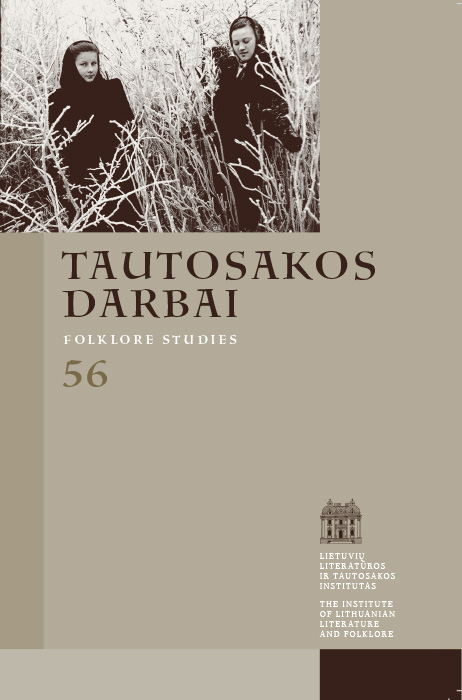Šventasis sambūvis: laukiniai gyvūnai žemdirbio sodyboje
Santrauka
Straipsnyje nagrinėjami ryšiai, per daugelį amžių susiklostę tarp žmonių ir sinantropinių gyvūnų, paaiškinamos tokių gyvūnų įsikūrimo lietuvių sodybose prielaidos. Autorė atskleidžia, kaip Lietuvoje žmonės žvelgė į keturis sodybos teritorijoje gyvenančius gyvūnus – paprastąjį žaltį, žebenkštį, baltąjį gandrą ir šelmeninę kregždę. Iš tyrimo paaiškėja, kad šie gyvūnai, su kuriais žmonės per šimtus ir net tūkstančius metų glaudžiai susigyveno, turėjo ne tik ūkinę, bet ir religinę reikšmę: jiems buvo priskiriamas namų ir ūkio globėjų vaidmuo. Be to, sodybų gyvūnų vaizdiniai buvo integruoti į sielos koncepciją ir pateko į pasakojimus apie gimimą, mirtį ir pomirtinį likimą. Žmonių ir sodybos gyvūnų sambūvis ne tik susieja skirtingas gyvybės rūšis, jų mitines reikšmes, bet į bendrą sistemą įrašo ir dievus. Dėl šios priežasties toks sambūvis vadintinas šventuoju.
Atsisiuntimai
Skaitomiausi šio autoriaus(ų) straipsniai
- Daiva Vaitkevičienė, Užkalbėti ir melsti: švelnioji galia lietuvių užkalbėjimuose , Tautosakos darbai: T 64 (2022)
- Daiva Vaitkevičienė, „Užkalbėjimas“, „žadėjimas“ ir „vardijimas“: eminės terminologijos metmenys , Tautosakos darbai: T 67 (2024): Tautosakos darbai
- Austė Nakienė, Daiva Vaitkevičienė, Vita Džekčioriūtė-Medeišienė, Gražina Kadžytė, Aurimas Bačiulis, Vida Savoniakaitė, Lina Būgienė, Kronika , Tautosakos darbai: T 55 (2018)
- Daiva Vaitkevičienė , Prie gyvybės medžio šaknų: Marija Gimbutienė šeimos moterų draugijoje , Tautosakos darbai: T 62 (2021)
- Daiva Vaitkevičienė, Midus baltų visuomenėje: nuo bitininkų iki diduomenės , Tautosakos darbai: T 51 (2016)
- Daiva Vaitkevičienė, Greimo mitologijos tyrimų takais , Tautosakos darbai: T 53 (2017)
- Daiva Vaitkevičienė, Rolandas Petkevičius – lietuvių etnopsichiatrijos tyrėjas , Tautosakos darbai: T 54 (2017)
- Daiva Vaitkevičienė, Dainius Razauskas, Būti mitologu – su širdimi ir iš širdies. Daivos Vaitkevičienės pokalbis su Dainiumi Razausku , Tautosakos darbai: T 60 (2020)
- Daiva Vaitkevičienė, Knyga apie unikalų latvių užkalbėjimų rinkinį , Tautosakos darbai: T 61 (2021)
- Daiva Vaitkevičienė, Pratarmė , Tautosakos darbai: T 62 (2021)
